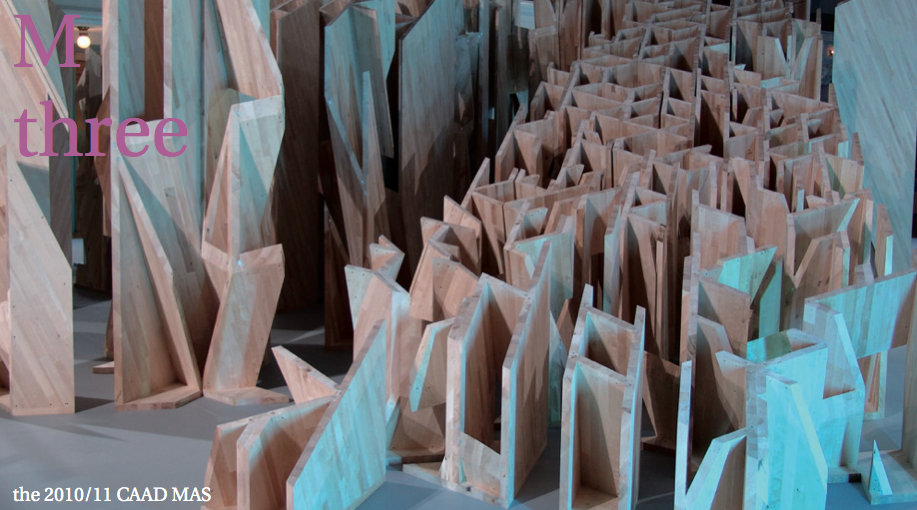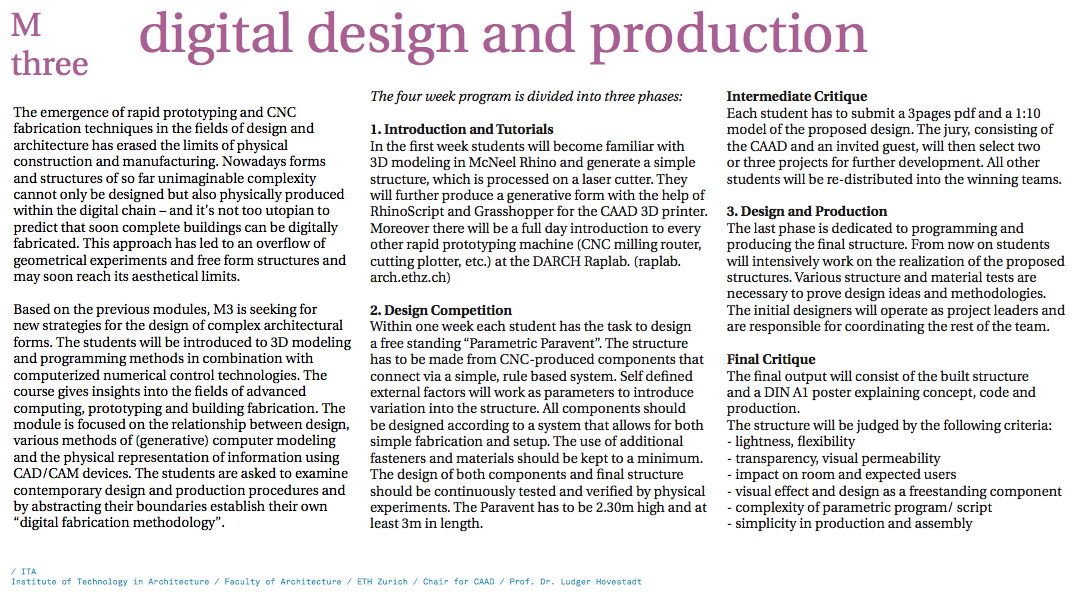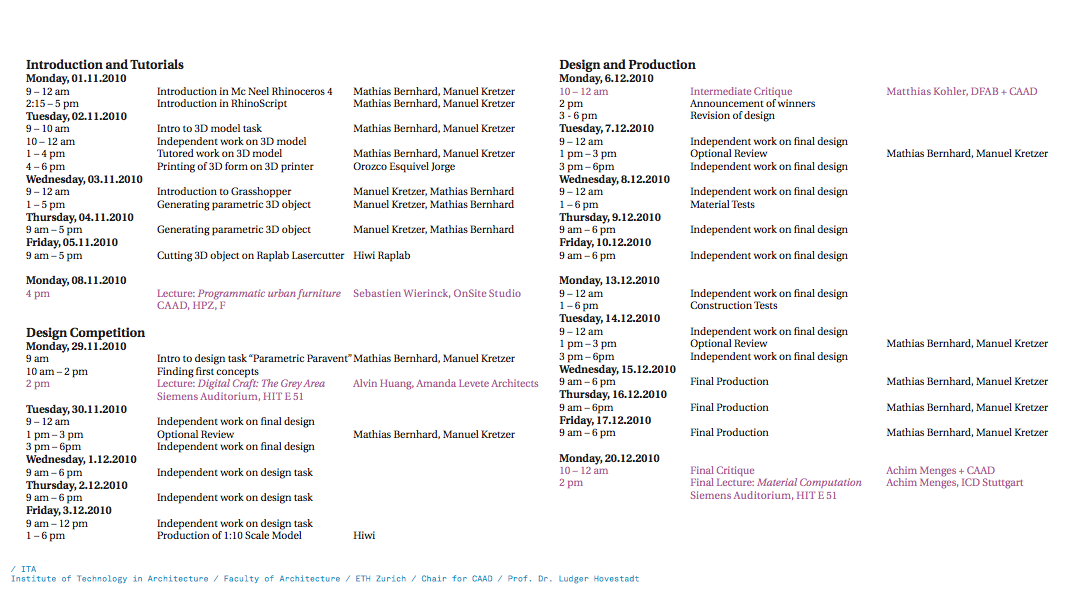M THREE: Digital Design and Production
The emergence of rapid prototyping and CNC fabrication techniques in the fields of design and architecture has erased the limits of physical construction and manufacturing. Nowadays forms and structures of so far unimaginable complexity cannot only be designed but also physically produced within the digital chain â and itâs not too utopian to predict that soon complete buildings can be digitally fabricated. This approach has led to an overflow of geometrical experiments and free form structures and may soon reach its aesthetical limits.
Based on the previous modules, M3 is seeking for new strategies for the design of complex architectural forms. The students will be introduced to 3D modeling and programming methods in combination with computerized numerical control technologies. The course gives insights into the fields of advanced computing, prototyping and building fabrication. The module is focused on the relationship between design, various methods of (generative) computer modeling and the physical representation of information using CAD/CAM devices. The students are asked to examine contemporary design and production procedures and by abstracting their boundaries establish their own
âdigital fabrication methodologyâ.
The four week program is divided into three phases:
1. Introduction and Tutorials
In the first week students will become familiar with 3D modeling in McNeel Rhino and generate a simple structure, which is processed on a laser cutter. They will further produce a generative form with the help of RhinoScript and Grasshopper for the CAAD 3D printer. Moreover there will be a full day introduction to every other rapid prototyping machine (CNC milling router, cutting plotter, etc.) at the DARCH Raplab. (raplab.arch.ethz.ch)
2. Design Competition
Within one week each student has the task to design a free standing âParametric Paraventâ. The structure has to be made from CNC-produced components that connect via a simple, rule based system. Self defined external factors will work as parameters to introduce variation into the structure. All components should be designed according to a system that allows for both simple fabrication and setup. The use of additional fasteners and materials should be kept to a minimum. The design of both components and final structure should be continuously tested and verified by physical experiments. The Paravent has to be 2.30m high and at least 3m in length.
Intermediate Critique
Each student has to submit a 3pages pdf and a 1:10 model of the proposed design. The jury, consisting of the CAAD and an invited guest, will then select two or three projects for further development. All other students will be re-distributed into the winning teams.
3. Design and Production
The last phase is dedicated to programming and producing the final structure. From now on students will intensively work on the realization of the proposed structures. Various structure and material tests are necessary to prove design ideas and methodologies. The initial designers will operate as project leaders and are responsible for coordinating the rest of the team.
Final Critique
The final output will consist of the built structure and a DIN A1 poster explaining concept, code and production.
The structure will be judged by the following criteria:
– lightness, flexibility
– transparency, visual permeability
– impact on room and expected users
– visual effect and design as a freestanding component
– complexity of parametric program/ script
– simplicity in production and assembly


